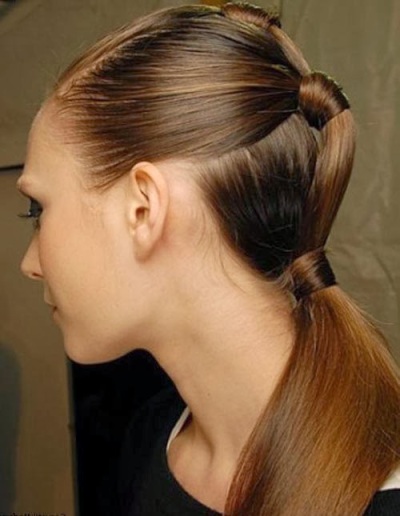If you are experiencing hair loss or seriously thinning hair, I urge you to do something about it before it’s too late. To start, you need to determine why you’re losing your Brazilian hair extensions. Here are seven reasons your hair may be thinning, and a few tips to get your hair loss under control.
Emotional Stress
Our bodies can respond to stress in many ways. Hair loss is one of them. Emotional stress can trigger your
Brazilian hair to significantly slow or stun it’s normal growth cycle. Many times emotional stress can lead to dietary stress (emotional unhealthy eating or significant nutritional deficiencies) and really snowball the hair loss issue. Untreated emotional stress, depression, anxiety, or mental disorders are often at the root of hair loss in women.
Treating and reducing your emotional stress, often with the help of a doctor or mental health professional, will eventually lead to the regrowth of your
virgin Brazilian hair over time.
Physical Stress
Like emotional stress, our bodies can respond to physical stress like an illness, injury, or surgery with
Brazilian virgin hair loss, and is actually rather common. Physical stress is often accompanied by the use of prescription drugs, anesthesia, and likely leads to high levels of emotional stress. Side effects of drugs that you may be prescribed for physical stress can have side effects that include hair loss. Do you see how all of these hair loss factors can start to weave together?
Obviously if you’ve been ill, are on high levels of medication, have had a recent surgery or injury you need time to heal and time for your
5a Brazilian hair loss to reverse itself. The restoration of your hair after physical stress really depends on how your body heals and returns to normal.
Medical Conditions
Hair loss can quite often be a direct result of an underlying medical condition or thinning
Peruvian hair extensions can be a side effect of medications that you’re taking because of a medical condition. Thyroid disorders and heart conditions, even when treated, are often accompanied by thinning, brittle hair and can result in hair loss. Cancer patients in particular, experience
virgin Peruvian hair loss when on chemotherapy medication to treat their disease, and is often results in total hair loss.
Talk with your doctor about your
Peruvian hair loss issues if you are on medication to see if hair loss is a normal side effect, and schedule a physical with your physician if you suspect an underlying undiagnosed medical condition is causing your hair loss. A physical and a few simple blood testscould reveal your answers or rule out reasons for your hair loss, giving you more viable avenues to explore.
Genetics
Unfortunately, your DNA may be to blame for your hair loss, and there’s not a lot that can be done when it’s just a part of your genetic code. While genetic hair loss is more common in men, it can certainly happen to women as well. If your mother, grandmother, or aunts suffered from thinning hair and hair loss, your answer may lie in your DNA.
What do you do when your genetics are playing against you? First, talk to your doctor and make sure you don’t have an undiagnosed family medical concern, and second take the very best care of your hair and your scalp that you can to ensure that your hair grows at it’s best.
Poor Diet
Nutritional deficiencies can lead to all kinds of health problems, and hair loss is common in people with a poor diet or malnutrition. When they say, “you are what you eat,” they couldn’t be more right when it comes to your hair. If you also suffer from dry skin, obesity, high blood pressure, or are vitamin deficient, the cause of your hair loss may lie in your diet.
Once you start incorporating more hair healthy foods into your diet, your hair will start to show the effects of your efforts. In cases of severe vitamin deficiencies, you may need to see your doctor for help returning your levels to normal.
Hormonal Imbalance
I can not tell you how big of a role that hormones play in the condition of your hair. Thyroid hormone imbalances (as I discussed above), and pregnancy or postpartum hormones (or lack there of) are probably the most common causes of hair loss that I see everyday. Postpartum hair loss is extremely common, and in many women as they approach and go through menopause. Changes in birth control methods can also effect your hair’s thickness.
Talk to your gynecologist about your hair loss concerns as you experience some of these big life changes, especially if older female family members experienced hair loss after pregnancy and during and post menopause.
Postpartum hair loss is, fortunately, usually only a temporary problem. Many woman loose a significant amount of hair 6-12 weeks after birth or after breastfeeding, but the hair often regrows and returns to normal over the course of 6-12 months. Some women’s hair never really goes back to normal, pre-pregnancy condition, and can even change texture or thickness after pregnancy. To improve your chances of thick hair post baby, take good care of your scalp and eat a diet high in hair healthy foods.
Poor Scalp Condition/Wrong Hair Products
Far too often, hair loss could be prevented or significantly lessened by simply taking care of your scalp. I find that many of my clients with thinning hair use a volumizing shampoo and conditioner to treat their hair problem. The problem with that is that volumizing products are too drying for women with thinning hair, and using them can actually make your hair loss worse. If you feel that your hair is thinning, and not simply thin in texture, your shampoo and conditioner should be scalp nurturing. I often recommend Nioxin products to my clients with thinning hair for optimal scalp health and hair growth.
Talk to your hair stylist about products that take better care of your scalp or look for words like nourishing, scalp therapy, or scalp health on the label.






